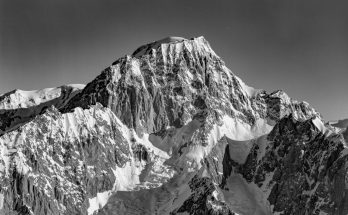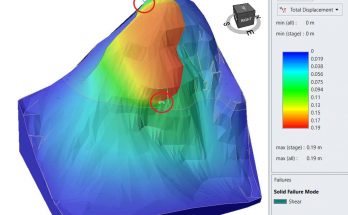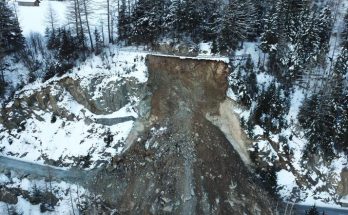Benjamin Rudaz
Supervisor: Prof. Michel Jaboyedoff
Expert: Alexandre Loye
This master thesis is focused on the Saint-Barthélémy stream, in the canton of Valais, Switzerland. It drains a catchment cut in three different geological units forming the Dents du Midi massif. Its massive torrential fan fills the whole width of the Rhône Valley.
Historically, the Saint-Barthélémy has on numerous occasions affected the human activities in the region, by cutting communications, damming the Rhône river, or simply by overflowing its banks on the debris cone. Thus, this work starts with a historical reconstitution of its past activities, with the goal of finding a pattern. The best documented crisis happened between 1926 and 1930. The different crisis recorded are mainly caused by rock avalanches in the upper part of the catchment. They result in a huge sediment supply, in a steep and snow-filled gorge. Debris flows initiate there, amplify in volume in the middle-part of the catchment, and reach the alluvial fan in multiple waves. To stabilize the terrain, and thus avoid future debris flows, the 1930 crisis was followed by an intense correction campaign. The different dams are hereby described, and their current status is evaluated.
The steady-state regime theory, applied on longitudinal profiles, states that for a stream to be in such state, its long profile must be upward concave, and follow a mathematical form, be it exponential, logarithmic or that of a power law. The streams present in the catchment are evaluated on this basis, using theorical longitudinal profile, of the exponential type. Their concavity is calculated, thus giving information about the maturity of said profiles. The longitudinal profiles are compared in their normalized form. The results identify a global pattern of potential sedimentation at the center of the catchment, while the external parts are expected to erode. The desequilibrium is stronger in the northern lateral streams.
A longitudinal profile in steady-state regime should be smooth. Therefore, profile irregularities, or knickpoints, are another sign of unsteady regime. To identify those knickpoints, three methods are used. First, using normalized profiles, the knickpoints are subjectively identified. Two numerical methods are then used to detect brutal change of local slope, relative to the neighbouring segments. The results show more precisely where future erosion is expected. The upper Saint-Barthélémy stream is particularly disturbed. The knickpoints are finally caracterized between geological, geomorphological and human origin.
By orthorectifying aerial photographs dating between 1969 et 1992, the activity of landslides connected to the main stream is measured. Lastly, using a sloping local base level method, the volume trapped behind the check dams is calculated, allowing to estimate mechanical denudation rates for different time frames. These rates (0.14 up to 0.84 mm/year) are in the range of similarly obtained rates in the Swiss Alps.



